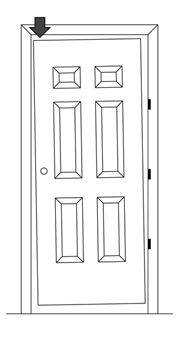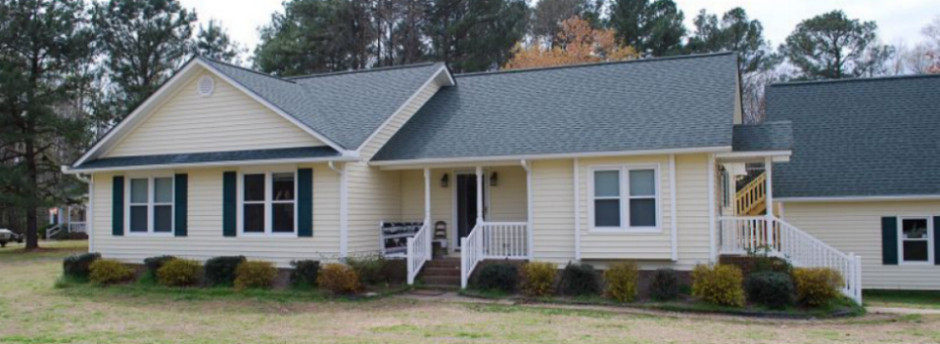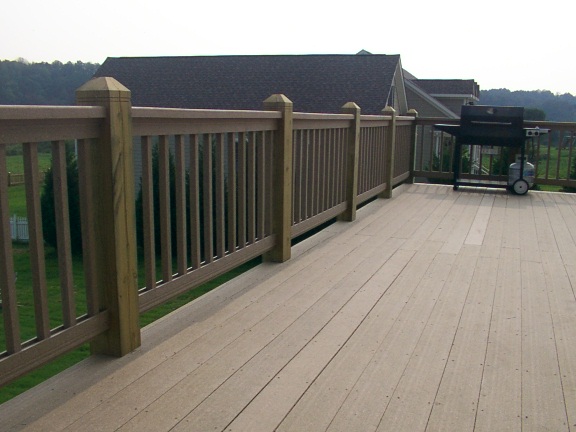Sagging Door Adjustment and Repair
A sagging door is a common maintenance issue that occurs in most homes at some point. There are several different circumstances that might result in a sagging door, each with specific adjustment or repair requirements. Both interior and exterior doors may sag and the remedies and adjustment procedures are similar for both types.
Indications of a sagging door
Whatever the reason for a sagging door the indicators are the same. The gap at the top of the door, between the door edge and the door jamb, will be wider at the latch side than at the hinge side. The upper edge of the door may start scrubbing the door jamb on the latch side, often causing the door to stick and become difficult to open and close. On exterior doors the bottom of the door may also start sticking and dragging on the threshold. If the door sags enough, the latch pin may become misaligned with the strike plate and the door will no longer latch properly. Before a sagging door is adjusted it is critical to determine the reason it is sagging.
Common reasons for a sagging door
- Loose hinge screws:
Hinge screws in the door edge or the jamb sometimes loosen over time. This may occur if they were not tightened enough during installation or if they were overtightened resulting in stripped threads.
With the door about half opened, grip the door knobs on both sides of the door and carefully lift up. If you can feel the door rock back against the jamb the hinge screws are either loose or stripped out. When the door is released it will drop back down and a gap may be apparent between the hinge plate and the jamb or the opposite hinge plate and the door.
To repair try carefully tightening the screws on all the hinges. As they are tightened the hinges will be pulled tight against the door edge and the jamb. If a screw or screws are stripped out remove the screw from the hole and insert a small piece of dowel or a small sliver of wood trimmed to fit the hole. It should fit just tight enough that it has to be tapped into the hole without splitting the wood. Trim the inserted piece of wood off flush with the surface of the surrounding wood. The previously stripped hole is now repaired and the screws can now be carefully tightened. An acceptable alternative to doweling stripped out holes is replacing the screws with longer screws that will reach into wall framing. Most new door units are now supplied with two long hinge screws, one each for the top and middle hinge.
If the door still does not fit perfectly into the jamb, minor adjustments may be effected by removing the hinge screws from the jamb side of the lower hinge and placing a thin shim between the hinge and jamb then carefully re-tightening the screws.
- Improper installation:
Careless or inexperienced installers sometimes install a door out of square or out of plumb. If the door was improperly installed, changes in temperature, humidity or minor settling are sometimes enough to cause the door to become misaligned. Shimming the hinges as described above may remedy the problem if the door is only slightly out of alignment. Having the door repaired or replaced professionally may be required if the door is too far out of alignment.
- Settling of the house:
Settling of the foundation or the framing sometimes occurs, often resulting in cracked drywall or plaster near the top edge of a door. If the settling is great enough the result is often a sagging door. Professional evaluation and repairs are usually required to properly rectify problems caused by settling.
- Damage from termites or decay:
Termites or decay may also cause settling. A sagging door is often the first indication of this much more serious problem. Professional evaluation and repairs are usually required to properly rectify problems caused by termites or decay.
- Improperly adjusted threshold:
When a sagging door is adjusted back into proper alignment it is often necessary to readjust the threshold. My post about door threshold adjustment discusses symptoms and methods to determine if a threshold can or should be adjusted
- Seasonal or weather related movement of the floor framing:
Although rare some floor structures can flex and move with seasonal changes in temperature and humidity levels. Additionally, prolonged high humidity levels in the crawl space under a house may result in degradation of the structural integrity of the floor joists. These conditions often manifests intermittently as a sagging door or a sticking door. Professional evaluation and repairs are usually required to properly rectify these problems.
- Paint buildup:
Paint build up is sometimes mistaken for a sagging door or improper door alignment. If the door appears square in the jamb but still sticks it may be caused by too many layers of paint. This may be remedied by stripping or sanding away several layers of paint and then re-painting the door.
More door related posts:
Did you enjoy this post? Tell us what you think in the comments box below.
Want to see more?
Subscribe to our RSS feed or Subscribe by e-mail




